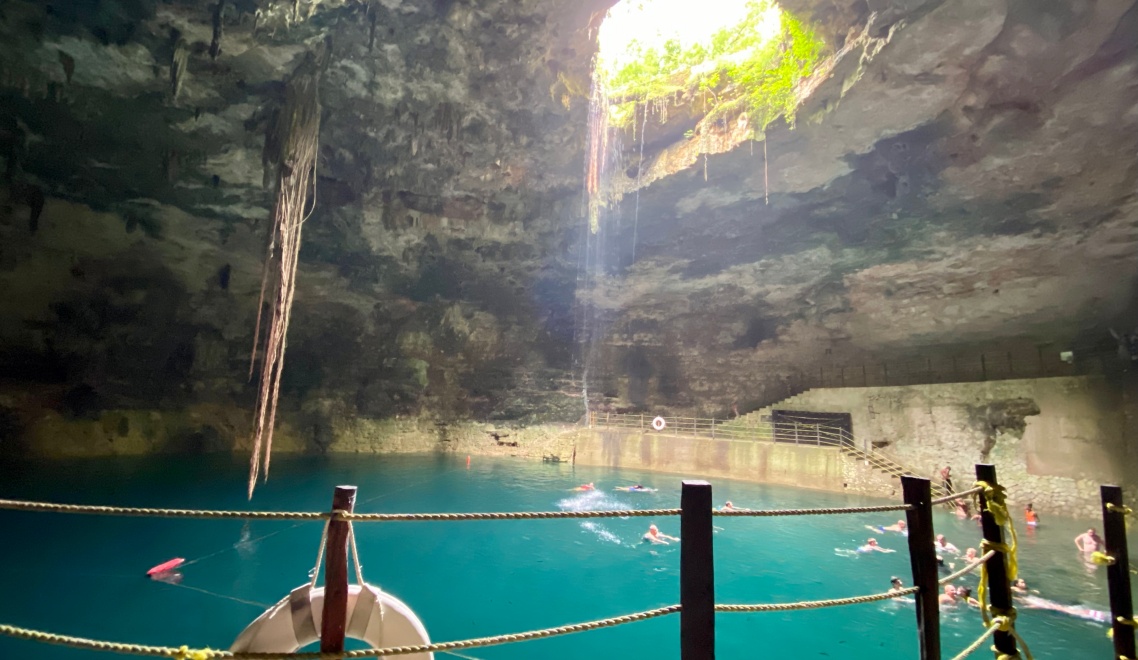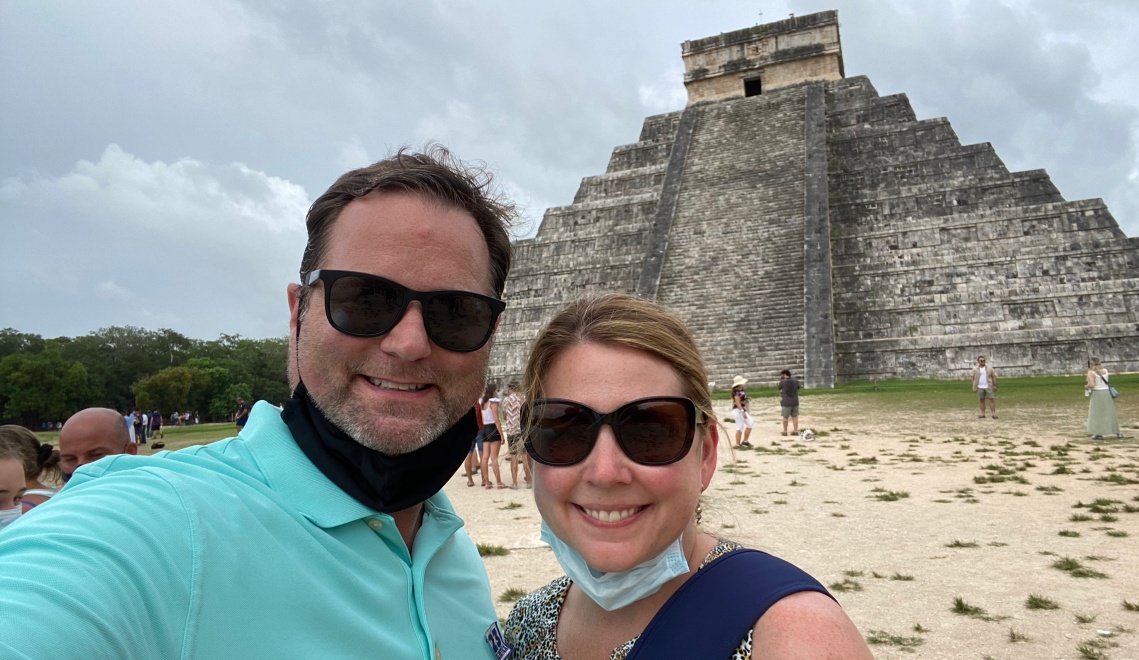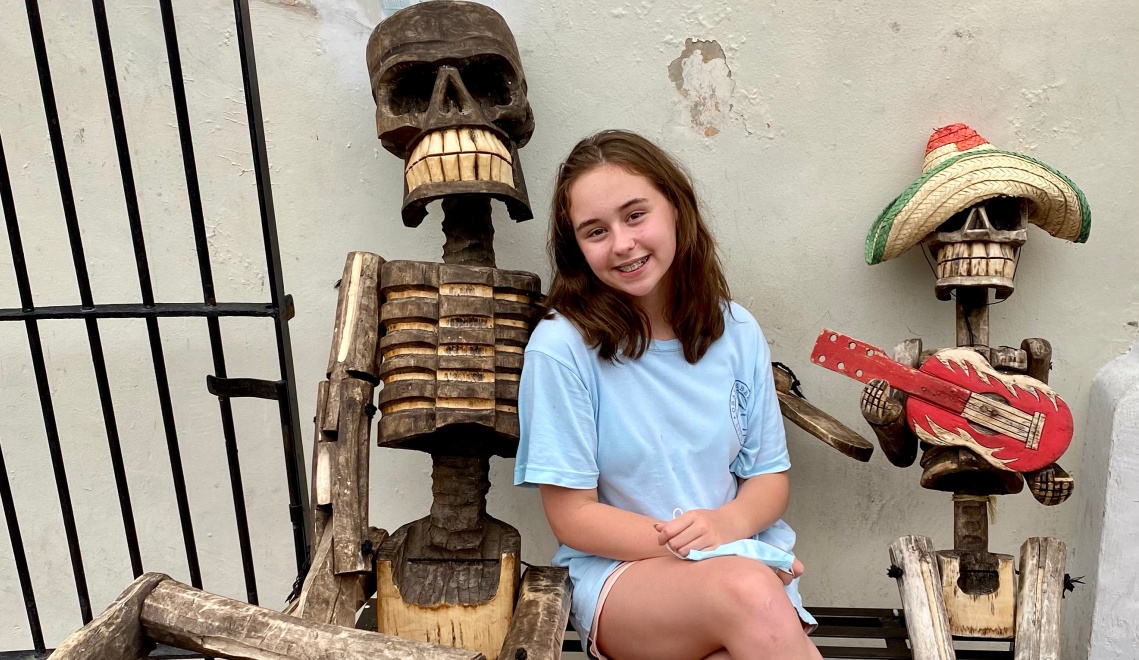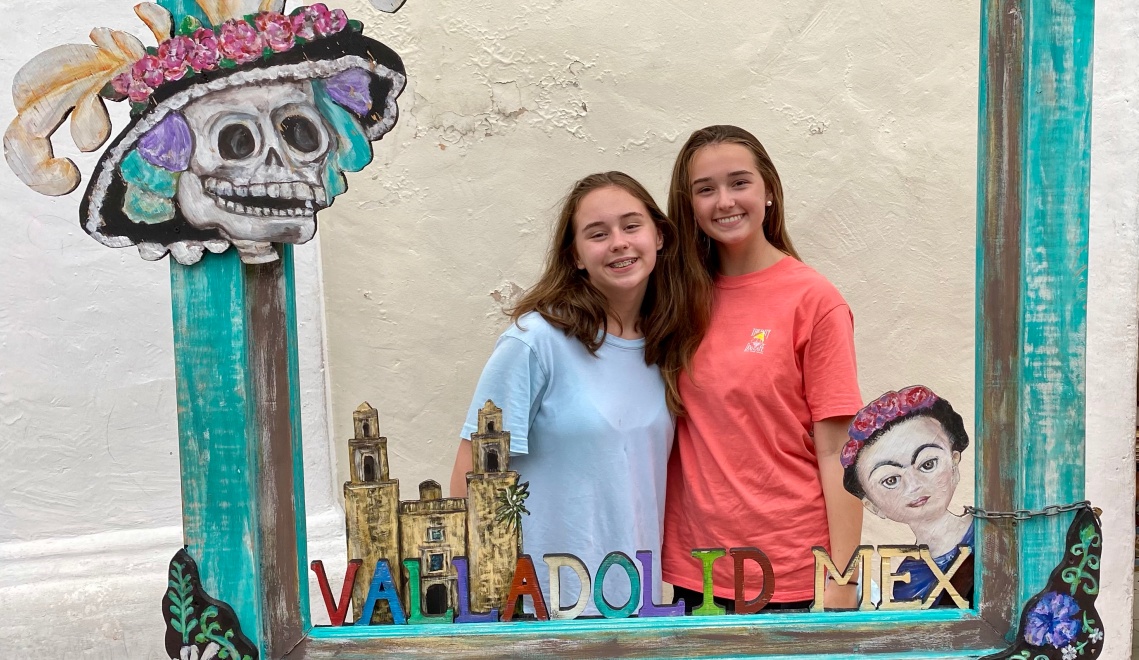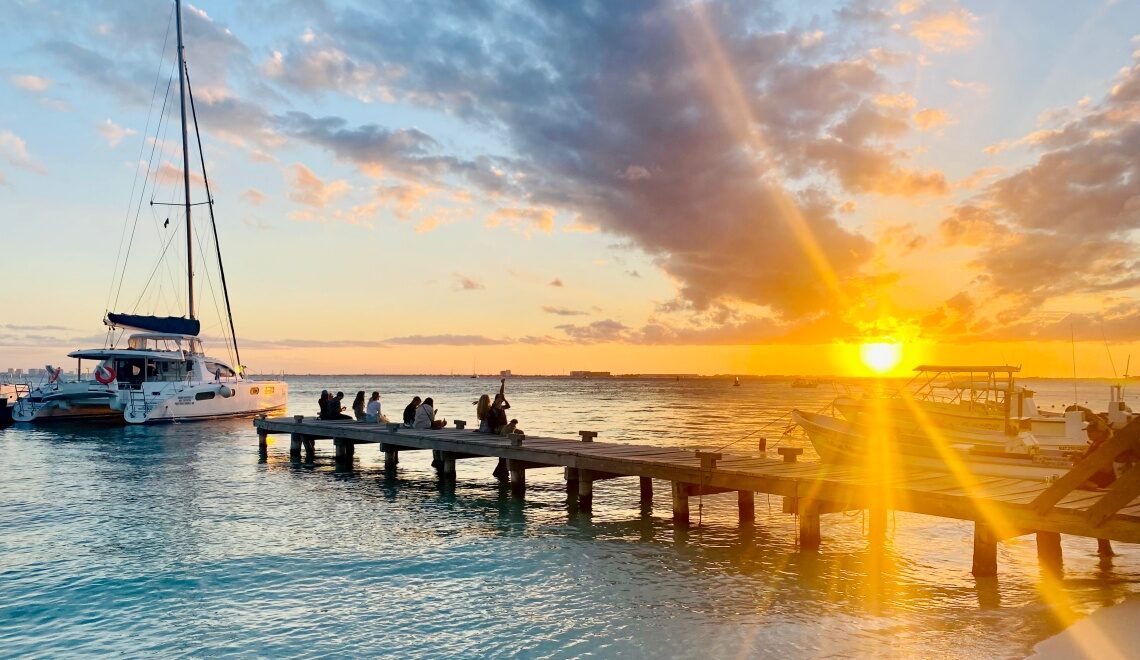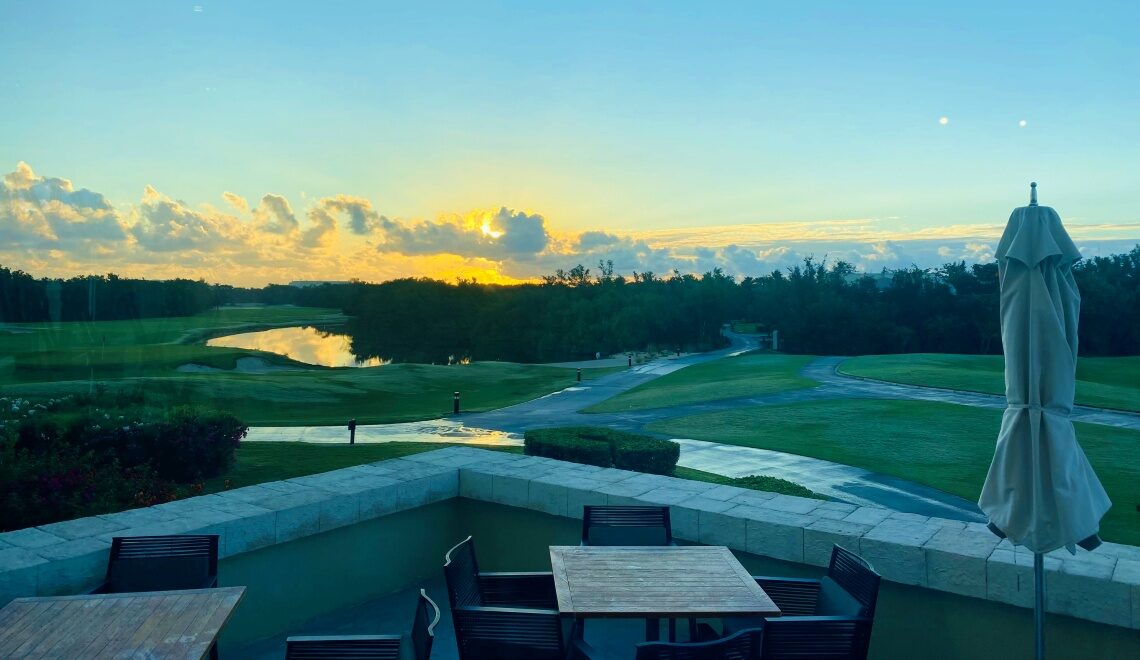Chichen Itza, Hubiku, and Valladolid | Traveling Back in Time
In many ways, the Chichen Itza, Hubiku, and Valladolid excursion is a must see for adult travelers who visit Mexico more than once. If you only plan to visit Mexico one time, I wouldn’t recommend this excursion over, for example, the snorkeling and Isla Mujeres excursion. I also wouldn’t recommend this excursion if you have young children who can’t sit still for a long car ride. Nevertheless, this excursion provides a unique understanding of the indigenous Mayan population that once ruled over this land, as well as a great opportunity to swim in a magnificent underground, cavernous cenote.
Our day began in a large, commercial bus ride. We comfortably rode through the Mexican countryside to a very small, rural town called Hubiku, located several hours outside Cancun. After unloading from the bus, we listened to an explanation of the Mayan calendar and importance of obsidian to the indigenous people. We then changed into our swimsuits and swim shoes for the swim in the large, cavernous cenote.
The cenote featured a large opening at the top, where rainfall falls into the cenote. On this warm June day, the cool waters felt invigorating. I floated in the water, looking up towards at the opening, and letting the drops of water fall into my face. It was a surreal moment in this large underground cenote, and one that I will never forget.
Afterwards, we travelled to the bustling tourist hub in Chichen Itza. If you travel in June, be forewarned that it is hot and humid. We broke off into smaller groups, each assigned to a different guide. Our guide walked us past the primary Mayan temple and other building structures. The guide explained the historical purpose of each structure, too many to explain or spoil the trip.
The most interesting feature of the trip is the grand Mayan ball court, called a juego de pelota. Mayan warriors played a sport where they fought to get a ball into a small opening on each side of the court. In many ways, the sport resembles a combination of football, rugby, and basketball. However, the primary distinction is Mayan warriors lost their heads if they lost the game. However, to Mayan warriors, playing and even losing the game was an honor. You can see remnants of this game carved into the stone walls, featuring images of the warriors and beheadings.
Finally, the excursion brought us to the Mexican city of Valladolid, a former Mayan city, which the Spanish converted to Christianity. The bus stops near a large park located in the center of town. You are given time to walk around and sight-see. However, because it was pretty hot and humid in June, we elected to take a few photo opportunities, buy a Coke from a local vendor, and sit on the unique, white park benches, watching the tourists and local people live their lives. The white backwards park benches are unique, because courting couples in days gone sat in these unique chairs and talked to one another right after mass in the nearby Catholic church.
Overall, this day-long excursion is well worth the price, so long as everyone can travel for long distances and appreciates historical sites. Enjoy your trip back in time!


